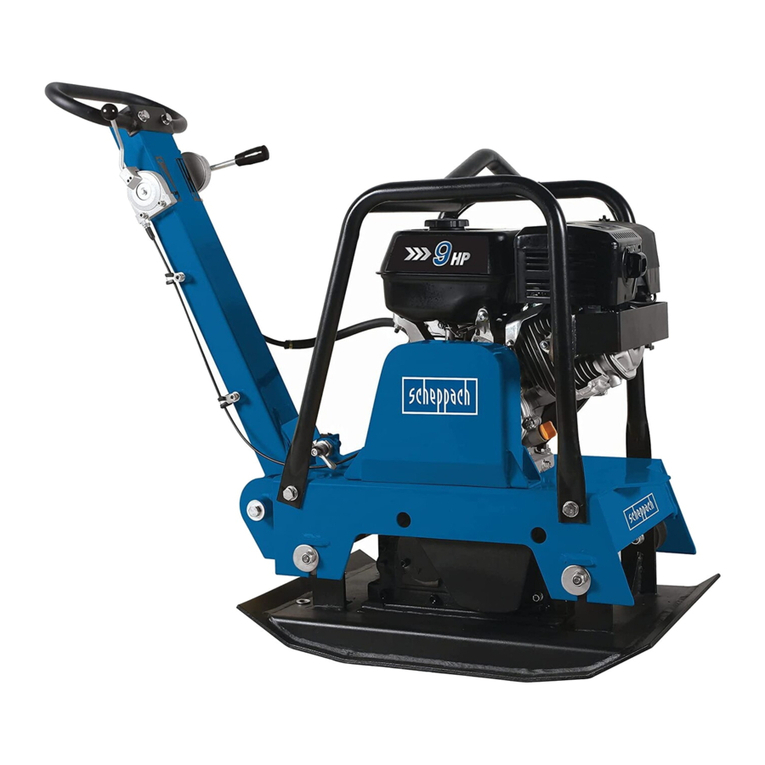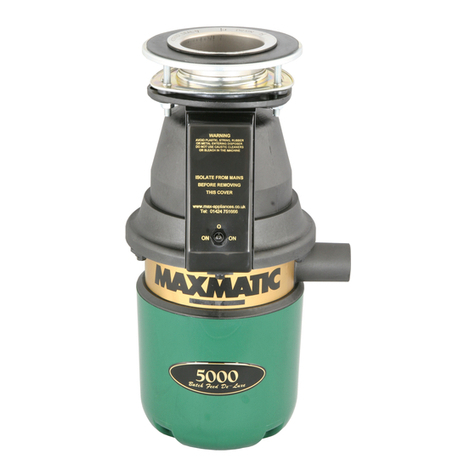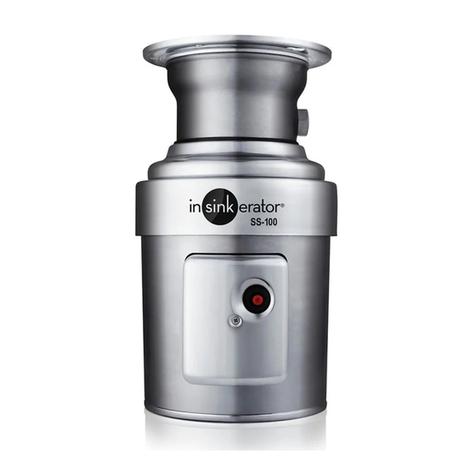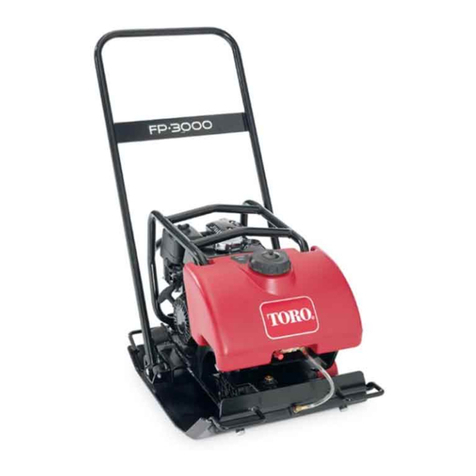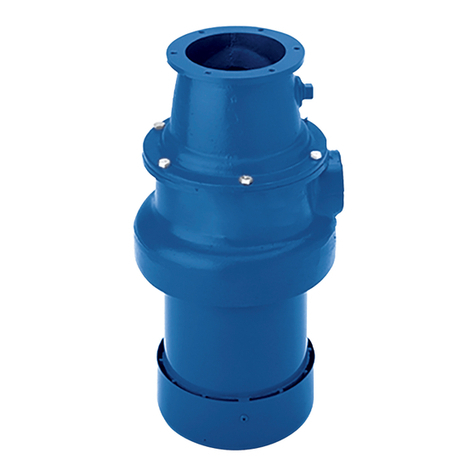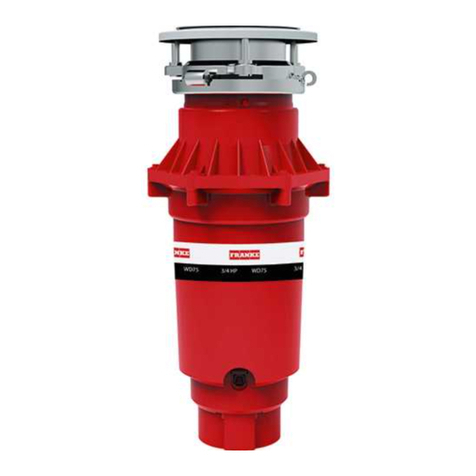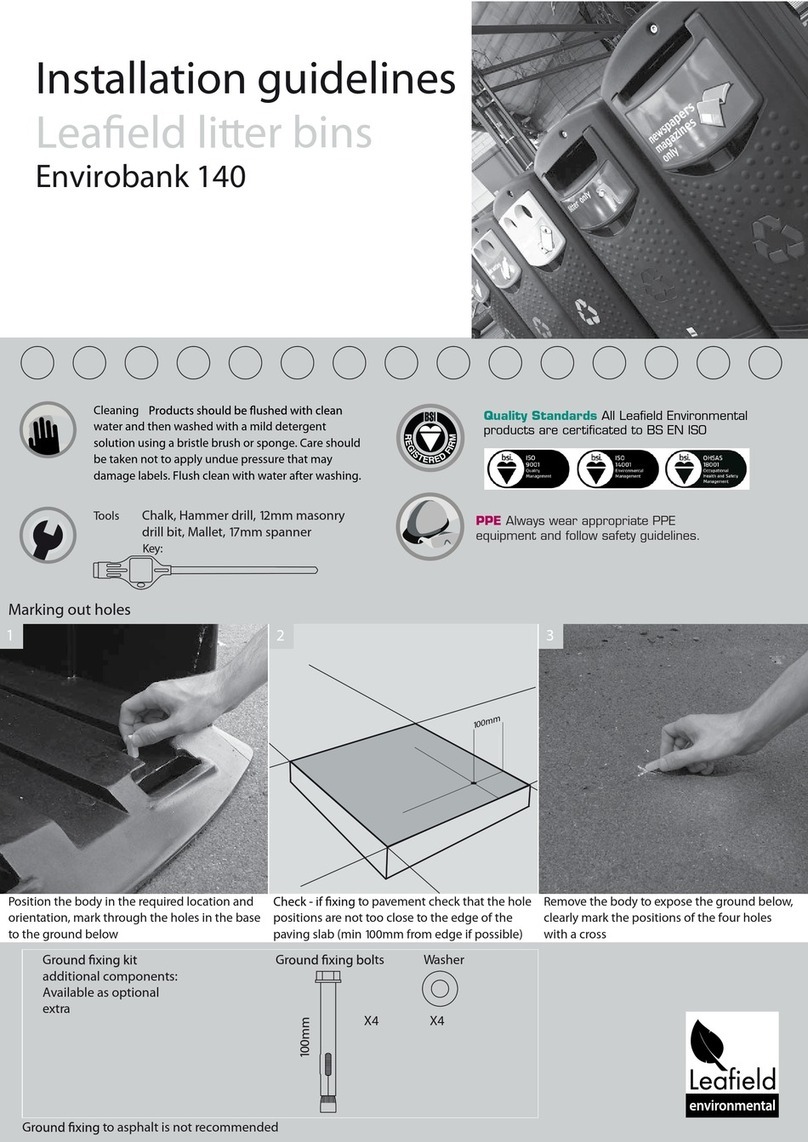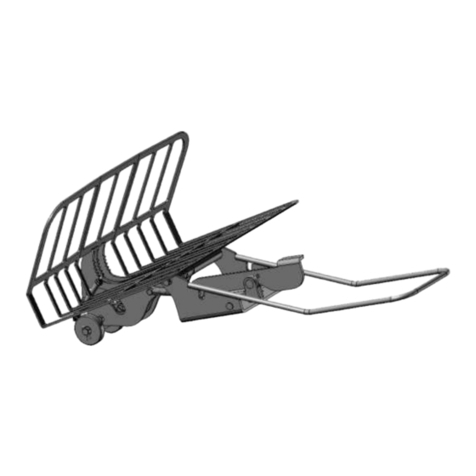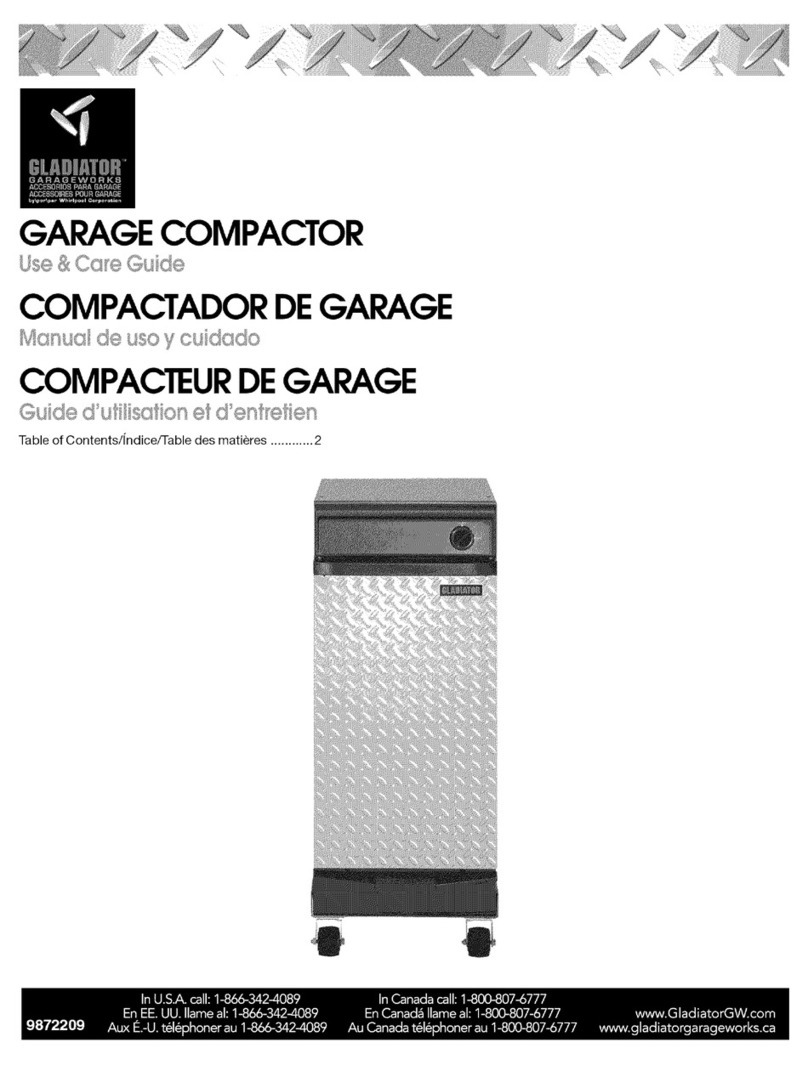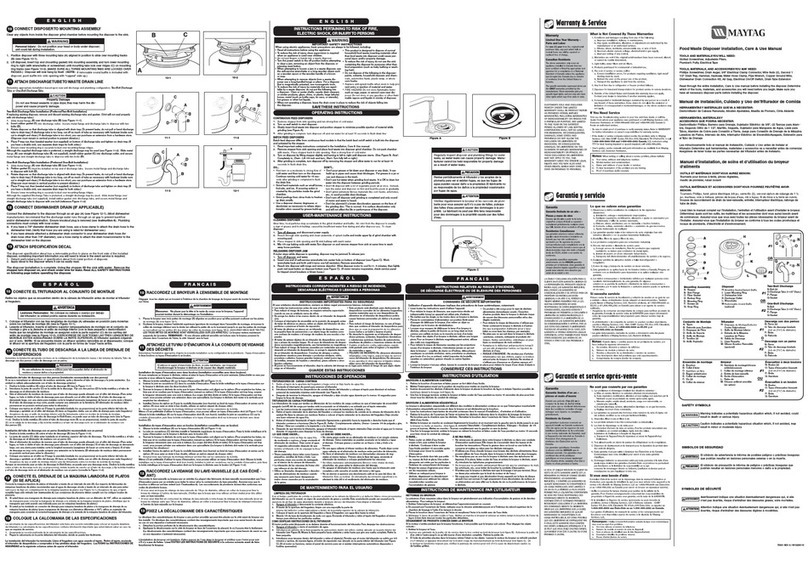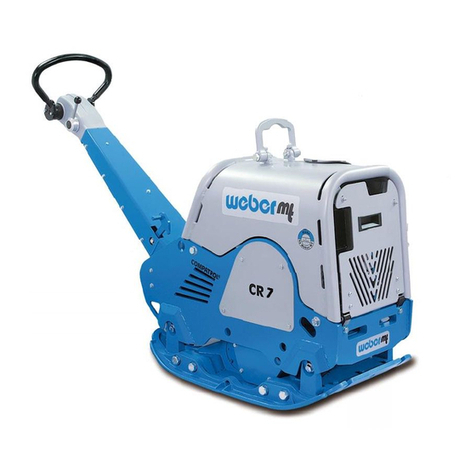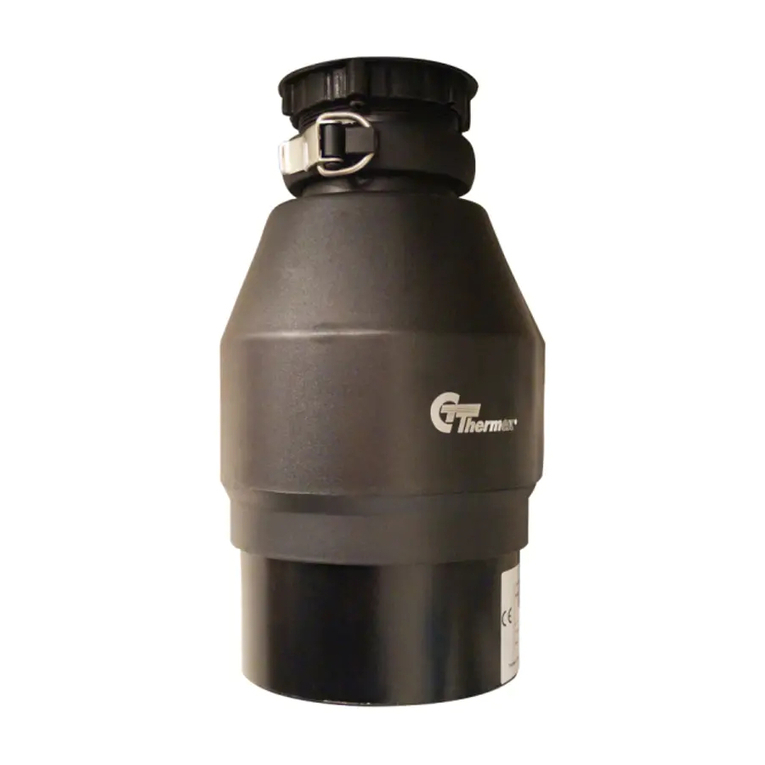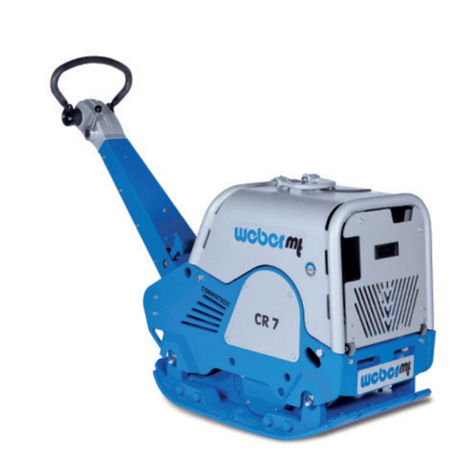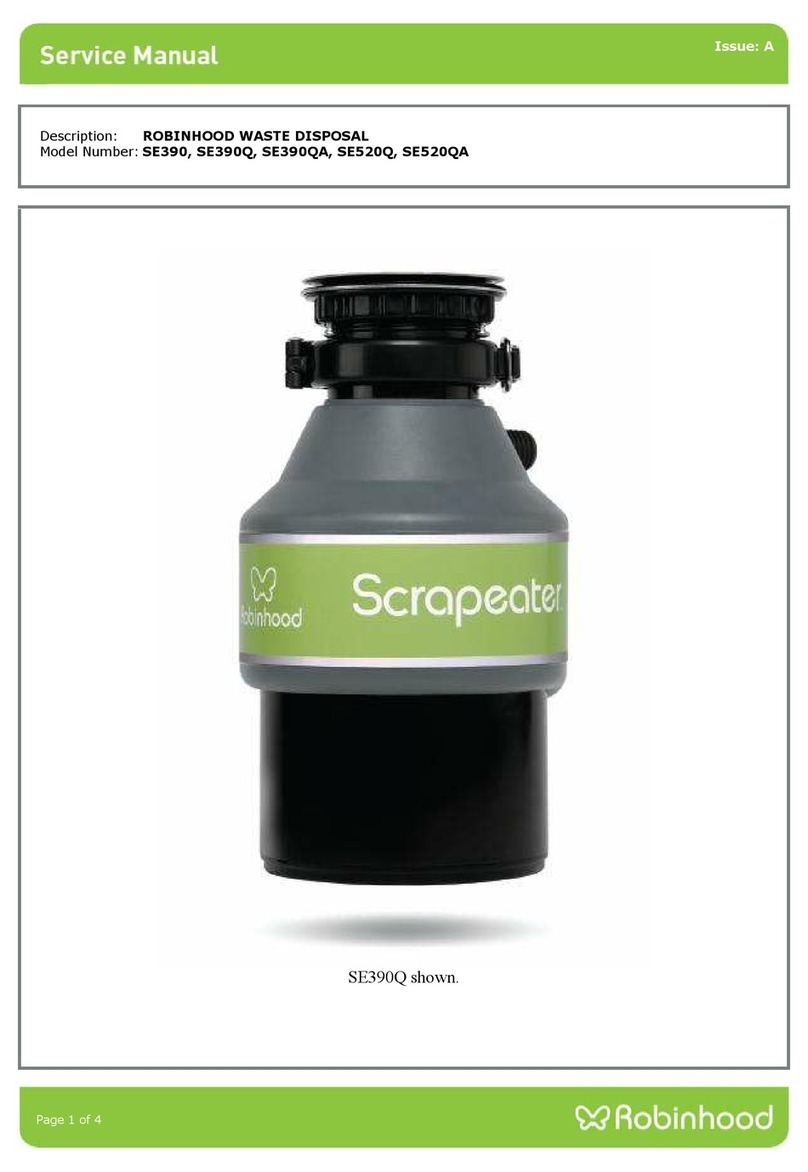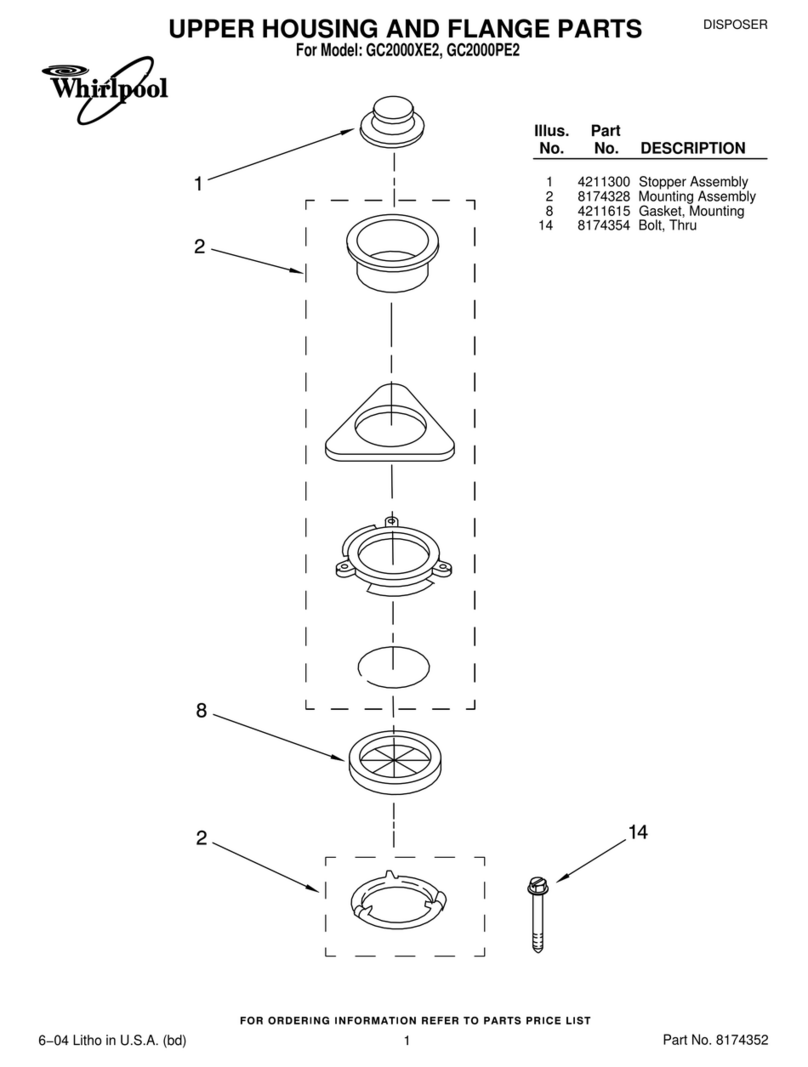
-4-
Biolan Oy
BIOLAN COMPOSTER 220 and 550
1.1 Technical specications
Composter 220 (PIKO 220)
• volume 220 l
• for 1–6 persons, depending on the
amount and type of waste
• bottom size 61 x 61 cm, cover size 75
x 79 cm (w x d)
• height of the composter 120 cm
• operating height 105 cm
• weight of an empty composter 32 kg
• weight of a full composter 100–150 kg
• weight of the cover when opening 3,5
kg
Composter 550 (PIKO 550)
• volume 550 l
• for 10–15 families, depending on the
amount and type of waste
• bottom size 88 x 74 cm (w x d), cover
size 115 x 115 cm
• height of the composter 120 cm
• operating height 102 cm
• weight of an empty composter 54 kg
• weight of a full composter 250-400 kg
• weight of the cover when opening 6 kg
1. Location of the
composter
Place the Biolan composter in a location,
where waste can be easily taken all year
round. A recommended place would be, for
example, by the gate next to the waste bin.
Place the composter on a rm surface in
a location where water will not gather. The
bottom of the composter is tted with an exit
hole for possible excessive seep liquid (in
the bottom in the PIKO 220, in the lower
part of the rear wall in the PIKO 550). This is
why the Biolan Composter should be placed
on the ground surface. If the composter is
placed onto tiling or stone paving, the tile
or the stone at the seep liquid hole shall be
removed. If the compost mass is exception-
ally wet, some seep liquid can run out from
under the emptying door (part 3) or it can
seep through the air valves in the front wall
(parts 11 and 12).
If you want to place the Biolan Composter,
for example, in a storehouse, you can insert
a hose connector into the seep liquid hole
and connect to it a hose, which goes to, for
example, a oor drain or a canister. Meas-
ure the diameter of the seep liquid hole and
choose a connector that is slightly bigger, to
ensure proper attachment of the connector.
The Biolan Composter is an efcient unit for the year-round composting of kitchen waste. Thanks to the thermo-insulated struc-
ture and the patented ventilation system, ready compost is processed rapidly. The wonder of composting can be monitored in
the thermometer and through the emptying doorway. The Composter 220 (PIKO 220) is dimensioned for the waste of one family.
The Composter 550 (PIKO 550) is suitable for more frequent use in, for example, housing estates, institutions, daycare centres
and schools.
2. Composting
Proper use of the Biolan Composter allows
more efcient composting of the mass and
enables convenient use and emptying of the
composter. Owing to the thermal insulation
and the ventilation system of the composter,
the composting of the waste is more efcient.
The composting starts as soon as there is a
sufcient amount of waste in the composter,
i.e. it is approximately level with the air chan-
nel. After start-up, the waste reaches the
cover soil stage in 5-8 weeks.
2.1 Commissioning
1. Put a layer about 5-centimetres thick of
Biolan Compost and Toilet Bulking Ma-
terial on the bottom.
2. Close the air valve in the front wall al-
most completely, i.e. set the gure 20
on the adjustment disc (part 12) point-
ing upwards (see the point How to ad-
just the air valve?)
2.2 Using the composter
1. Empty the biowaste bin into the com-
poster.
2. Cover the waste with Biolan Compost
and Toilet Bulking Material (product
number 70562100). Depending on
the wetness of the waste, a suitable
amount is about 1/3–1/2 of the amount
of waste added. The Biolan Compost
and Toilet Bulking Material absorbs
odours and keeps the compost mass
airy.
3. Continue the lling until the surface of
the waste reaches the level of the low-
er air pipe (part 5 in the PIKO 220, part
7 in the PIKO 550). Adjust the air valve
in the front wall in winter to the position
40 and in summer to the position 50.
4. Continue the lling in accordance with
points 1-3 until the surface of waste
reaches the level of the upper air pipe
(part 4 in the PIKO 220, part 5 in the
PIKO 550). Open the air valve properly
– depending on the outside air temper-
ature (winter frost-summer heat) be-
tween the positions 50-100. Sufcient
amount of waste has accumulated, and
the population of micro-organisms has
been created. The composting process
starts, which can be established from
the rise of the temperature. Observe
the location of the thermometer (part 7)
at the upper air pipe. The thermometer
gives indicative information about the
various stages of the composting proc-
ess and the temperature during the hot
phase.
5. tinue lling the composter as usual
(points 1–3) until it becomes almost full
of waste. Open the emptying door (part
3) and empty (see the point 2.4)
2.3 Using the composter in frost
The heat in the composter is created by
burning of the waste. The thermal insulation
of the Biolan Composter prevents the heat
from escaping and, by doing so, boosts the
operation of the composter and helps it stay
unfrozen.
The composter’s operation tolerates mild
frost provided, that waste is added continu-
ously on a weekly basis and the amount of
waste added is sufcient. In severe frost or
if the toilet is rarely used, the compost mass
cools down and, in the winter, may even
freeze. If the temperature of the composter
drops below 20 degrees centigrade:
1. Continue lling the composter as usual
(see paragraph 2.2, points 1-3).
2. If the frost is severe, adjust the air valve
to a lower setting, between positions
20–40.
3. Check that the air outlet valve (parts 10
and 11) has not frozen. Dismantle the
valve cover and remove any ice.
4. Empty the composter from the empty-
ing door so as to provide more space
for the waste and to stimulate the com-
post mass by inputting oxygen and me-
chanical crushing (see paragraph 2.4).
5. Bury hot water bottles or canisters in the
surface layer of the compost mass to
provide warmer conditions for the micro-
organisms.
Freezing damages neither the unit nor the
compost mass itself, and the composting
process will continue at the latest when the
sun begins to warm in spring.
